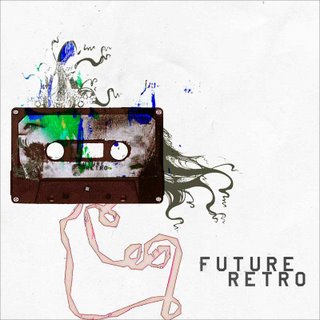Pulse
 Japanese horror films have been on a roll in the US the past few years, so it comes as no surprise that latest arrival Pulse has found its way to our DVD shelves, although it took nearly five years from its original theatrical release. Following in the footsteps of The Ring, The Grudge, and Dark Water, it has also been deemed worthy of a US remake, no doubt sealing the decision to finally release the original here. The similarities carry over to the subject matter as well, which ends up being both a blessing and a curse.
Japanese horror films have been on a roll in the US the past few years, so it comes as no surprise that latest arrival Pulse has found its way to our DVD shelves, although it took nearly five years from its original theatrical release. Following in the footsteps of The Ring, The Grudge, and Dark Water, it has also been deemed worthy of a US remake, no doubt sealing the decision to finally release the original here. The similarities carry over to the subject matter as well, which ends up being both a blessing and a curse.The simple description of Pulse is The Ring with computers instead of videotapes, but there’s much more behind the idea. Instead of The Ring’s focus on one spirit’s quest for revenge and companionship from beyond the grave, Pulse takes the scenario a gigantic leap forward with the interesting concept of what might happen if the souls of the dead outgrew the confines of their current realm and sought new homes among the living. Unfortunately for the living world, all of those souls have been very lonely in the spirit world and can only seek comfort by having living people commit suicide to join them. This sets up a tale that takes on apocalyptic proportions by the end of the film, although the worldwide scope isn’t made clear until the final moments.
The spirit foray into the living world begins with shadowy, jerky computer images that ask viewers if they would like to visit a website to meet ghosts. Sounds like a Match.com experiment gone awry, but the hapless viewers can’t refuse this creepy offer in spite of their best efforts since the images continue to appear even when their Internet connections are terminated. The main plot follows one computer newbie who sees the images at his home and reports them to a couple of university computer lab workers in the hopes of finding out how to stop them or at least determine where they’re coming from. While they carry out their investigation, they learn of an exponentially growing suicide rate that begins to include their friends and colleagues.
On the surface, Pulse is just a simple suspense-fest, long on atmosphere but short on logic or character development. However, the deeper theme is alienation in modern culture as the film explores the loneliness of the spirits as well as the living people they’re haunting. It does an admirable job of expressing just how alone people can really be, even when they’re in heart of a bustling urban city. When faced with such crushing loneliness, the embrace of a spirit friend via suicide suddenly doesn’t seem like such a losing proposition.
While The Ring is the first influence that comes to mind, Pulse also shares similarities with the earlier anime series Serial Experiments: Lain, which featured a teen suicide who started communicating with former classmates via the Internet. Lain delved more fully into the concept of the Internet as another world, but Pulse’s plot point is so derivative that the film ends up feeling much less original as a result. It also borrows liberally from the style of The Ring, especially the spooky computer images that seem like they were lifted directly from the infamous videotape.
The pace is slow enough that it allows the suspense to simmer rather than boil over, and there’s practically no gore involved so squeamish viewers are welcome. It’s great for fans who just couldn’t get enough of the thrills and atmosphere of The Ring as well as the later films Dark Water and The Grudge, but it would be even better for viewers who have never seen any of them and won’t be distracted by the similarities.




